Order Manager: Getting Started Guide
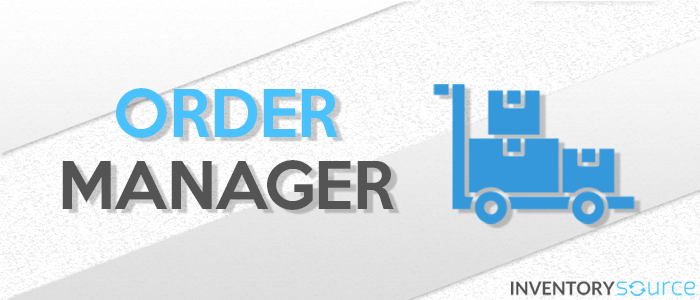
Our Order Manager tool allows you to streamline the ordering process from your sales channel to your suppliers to your customers. Please take some time to review the information below to familiarize yourself with the tools and features of Order Manager.
Table of Contents
-
Processing Orders
-
Order Status
-
Searching for Orders
-
Order & Tracking Syncing
-
Shipping Mapping
-
Order Numbers vs. Purchase Orders
-
Confirmation Numbers
-
FAQs
Processing Orders
New orders sync every hour from your sales channel to the Inventory Source order manager. Once they sync, you will need to process them by clicking the green "Process" button. This will send the order information to your supplier for fulfillment, shipping and tracking which is then sent back to your sales channel.
Resolve Errors: If any order information is missing, you will see a red "Resolve" button with a message below it indicating what information is needed. Click the "Resolve" button to pull up the order-editing page to fill in the missing information. Once complete, you should then see the green "process" button next to that order and you can process the order as normal
Order Status
Each order's status is updated with the most recent order activity. Here is a guide to understanding the status and life cycle of an order:
-
Not Processed: the order is waiting to be processed
-
Processed: the order has been sent to the supplier and is ready for fulfillment and tracking details
-
Partially Processed: a portion of the order has been processed
-
Shipped: the order has been shipped and the supplier has provided tracking information
-
Partially Shipped: part of the order has shipped. This is sometimes the case with orders that include products from multiple warehouses.
-
Failed: there was an error with the order processing. You should see a detailed message indicating why the order failed.
-
Canceled: the order has been marked as canceled
Searching for Orders
You can search for orders based on order status, by sales channel, by supplier, or any combination of the three. You can also use the search bar to search for orders that include orders numbers, customer name or product SKU information. Additionally, you can set certain date parameters and search for products that were imported within date sets using the start and end calendar icons.


Order & Tracking Syncing
The "Sync Orders" button allows you to run an on-demand sync should you want to instantly see new orders before the next scheduled sync runs.

To view your order sync history by sales channel, click on the channels tab to view the date and time of each channel's last sync.

Shipping Mapping
Configuring your Order Manager shipping mapping allows you to quickly process orders without having to assign a shipping method to individual orders as they are imported each time by designating a specific shipping method to certain shipping criteria that is pulled in from your sales channels.
To edit your shipping mapping, follow the steps below:
1. Access the Channels tab

2. Click the blue icon to the left of the sales channel you'd like to edit

3. Select Shipping Mapping from the left-hand menu
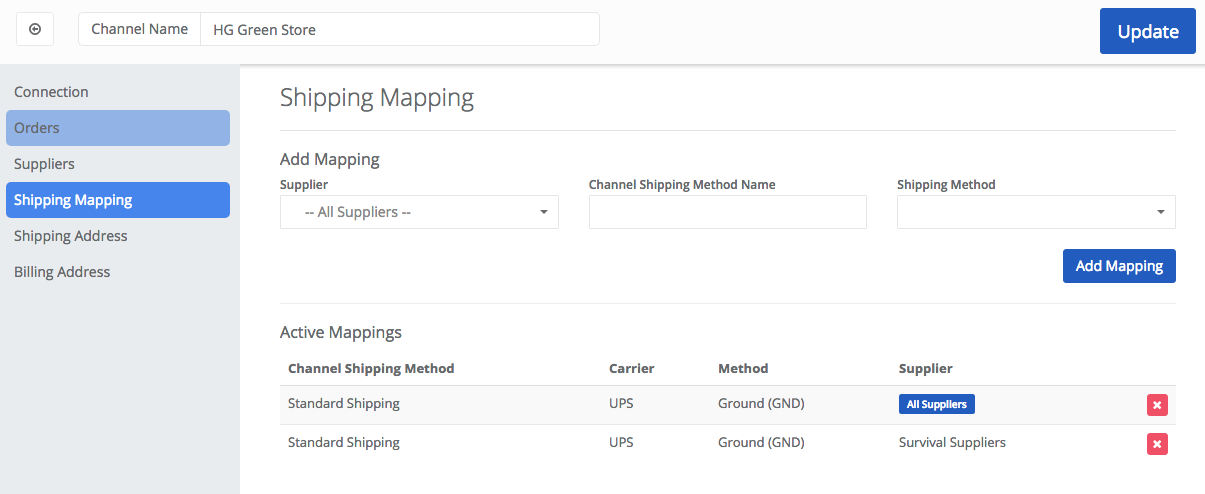
4. Select the Supplier, type in the Channel Shipping Method name and select the Shipping Method.
For example, if the shipping details imported from your Shopify store read, "standard shipping," then you'll want to select the corresponding method offered by the supplier as the default carrier for all future "standard shipping" orders. If you offer multiple shipping options (i.e., free, standard, next day, etc.), you can map multiple methods to the same channel for the same supplier.

5. Click Add Mapping. You will see that the mapped shipping method has been added as an active mapping.
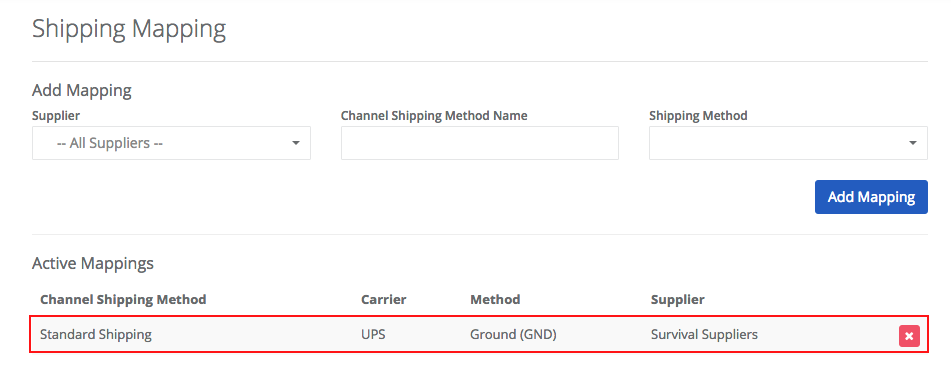
Here is an example of multiple methods mapped in a channel:
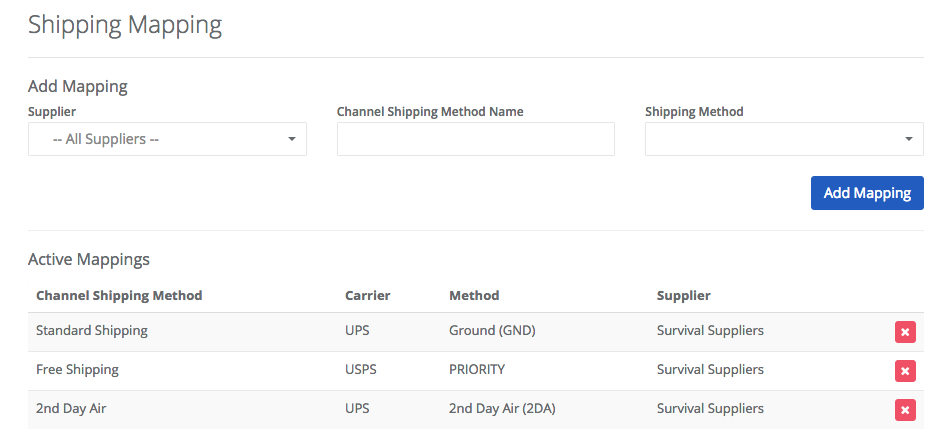
It's important to note that if you are integrated on multiple channels, you'll need to complete the shipping mapping for each channel. This is because each individual channel imports their channel shipping methods differently. Your Amazon orders may import their shipping details to read, "standard shipping," while your Shopify channel orders could read, "flat rate". You may still choose to map both to UPS Ground, for instance, however you'll need to ensure each channel's mapping is accurate and that they coordinate with the correct details.
Order Numbers vs. Purchase Orders
There are two numbers associated to each order in Order Manager. The order number is the number that is imported from your sales channel. The PO number is the number that is generated when we send the order to your supplier for processing. Should you ever need to reach out to your supplier regarding a particular order, you should give them the PO number for reference since this can often be different than the order number.
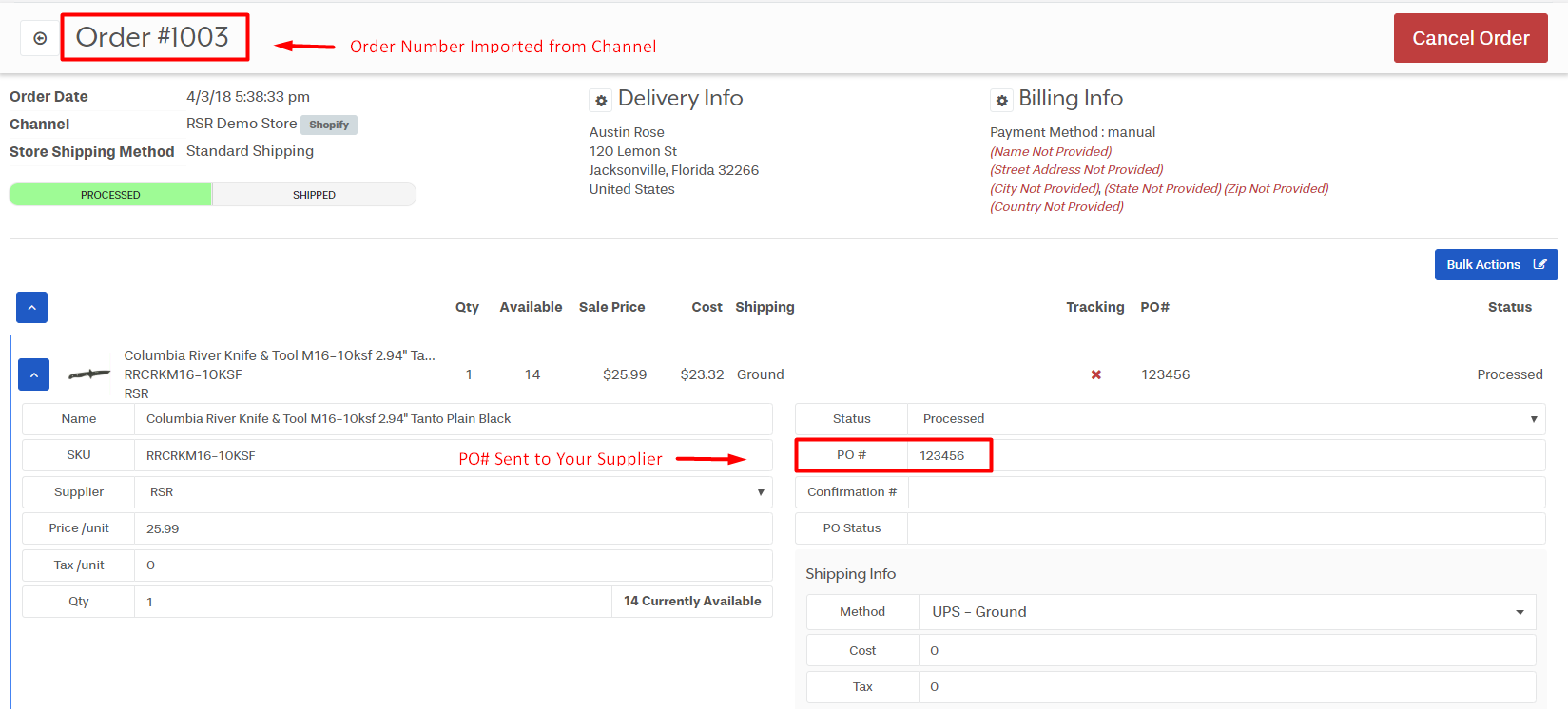
Confirmation Numbers
Some suppliers will pass back their own internal order ID once an order is submitted. If your supplier provides this information, we will include is in the confirmation number field shown below:

FAQs
What if I don't want to manually process my orders? We recommend "verifying and processing" as a default for the first few weeks while you are getting familiar with the Order Automation tools. Auto-processing is an option you can activate by going to Order Manager > Channels > Select the settings gear next to your store > Orders > Auto Order Processing > Update
Will my customers receive shipping confirmation or invoices from Inventory Source or my supplier? No. Most sales channels and marketplaces allow you to create confirmation email templates that will trigger once the supplier sends the tracking information to your store.
Can I use my own carrier account? Yes, we can pull shipment tracking from your dropship supplier or from your own UPS, FedEx, or USPS account. Some integration and setup fees may apply.
Do all suppliers support order automation?In order to send automated orders to suppliers they must accept orders in an automated way. Meaning they must accept orders via email, FTP, API, EDI, or some other method that is not manually placing an order via a dealer portal or website. Suppliers must also provide shipment tracking in a way that is accessible. Shipment tracking is typically provided the same way orders are sent, either through email, FTP, API, EDI or other methods other than posting to a website or portal.
What if I receive an order with products from multiple suppliers?Orders that have products from two different suppliers will automatically be sent as separate POs to each supplier. Product shipments are then managed at the SKU level and tracking is synced as each individual product is shipped. For channels that support this, we will mark the order as partially packed/shipped for orders that have products that are fulfilled at separate times.
Can I process refunds or cancellations through the dashboard No. Refunds will be processed through your sales channel or marketplace and any returns or exchanges will be handled directly through the supplier. All cancellations must be communicated directly to your supplier. Marking an order as "canceled" in Order Manager will not cancel the order.